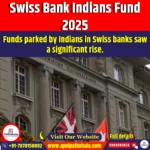GS II – Parliament and State legislature – structure, functioning |
Recently, as many as 50 Opposition MPs have reportedly signed a resolution to bring a no-confidence motion against Vice-President (Rajya Sabha Chairman) Jagdeep Dhankhar.
During the last budget session, the Opposition considered submitting a notice for a no-confidence or impeachment motion against Vice President and House Chairman Jagdeep Dhankhar.
Highlights :
VP vs. Opposition: The allegations are as follows :
- Insufficient space and time for the Opposition to voice its opinions.
- Microphones frequently turned off.
Term of Office of the Vice-President :
The Vice-President shall serve five years from the date he assumes office. However:
(a) The Vice-President may resign from his position by submitting a written resignation to the President.
(b) The Vice-President may be removed from office by a resolution passed by the Council of States, with a majority of its members, and agreed to by the House of the People. However, such a resolution can only be moved if at least fourteen days’ notice has been provided.
(c) The Vice-President shall continue to hold office beyond the expiration of his term until his successor takes office.
Details |
|
Provisions | Article 67(b) of the Indian Constitution |
Who Can Initiate | It can only be introduced in the Rajya Sabha, not the Lok Sabha. |
Notice Requirement | Before moving the resolution, at least 14 days advance notice must be given. |
Voting in Rajya Sabha | It Requires an effective majority (majority of all members present and voting) in the Rajya Sabha. |
Voting in Lok Sabha | It Requires a simple majority (more than 50% of members present and voting) in the Lok Sabha. |
Grounds for Removal | The Constitution does not specify any grounds or justifications for removing the Vice President. |
Temporary Vacancy | If the Vice President is removed -> Deputy Chairman of the Rajya Sabha assumes the role of Chairman. |
Historical Context | No Vice President in the history of the Indian Parliament has ever been removed under this Article. |
No Confidence Motion:
According to Rule 198 of the Rules of Procedure and Conduct of Business in the Lok Sabha, a No Confidence Motion is a formal request initiated by the opposition against the sitting government. If the motion passes, the ruling party must step down if it fails to prove its majority in the Lok Sabha. The No Confidence Motion is a significant tool used to challenge the Council of Ministers in the Lok Sabha.
The No Confidence Motion, also referred to as the No Confidence Vote, is a parliamentary motion brought forth by the opposition in the Lok Sabha to assess the ruling party’s majority. This legislative resolution declares that the entire Council of Ministers is unfit to continue in leadership due to their shortcomings or failure to fulfill their responsibilities. In the Lok Sabha, a No Confidence Motion can be accepted without requiring prior justification.
If the No Confidence Motion is supported by 51% of the house members, the administration is considered to have lost its majority and is required to resign. Upon introducing a No Confidence Motion, the opposition can either demand that the administration prove its majority or initiate a vote of confidence to do so. The opposition sometimes uses the No Confidence Motion as a tool to compel the administration to address critical issues.
Procedure for a No-Confidence Motion in the Lok Sabha
The process for a No Confidence Motion is governed by Lok Sabha Rule 198. Although there is no specific article on No Confidence Motions in the Indian Constitution, Article 75 states that the Council of Ministers is collectively accountable to the Lok Sabha. A No Confidence Motion can be introduced in the Lok Sabha if it has the support of at least 50 MPs, typically from the Opposition.
How is a No Confidence Motion Introduced?
Under Rule 198(1)(a), the Speaker may call upon the members to seek permission to introduce the motion. According to Rule 198(1)(b), the opposition members proposing the motion must submit a formal notice to the Lok Sabha Secretary-General by 10 AM on the day the proposal is to be made. If this deadline is missed, the proposal must be submitted by 10 AM the following day.
Once the motion is read in the House, the Speaker may, according to Rule 198(2), ask the proposing members to stand if they believe the motion is in order. If at least 50 members support the motion, the Speaker will announce its approval. The No Confidence Motion must then be debated within 10 days of the leave application.
Under Rule 198(3), the Speaker may allocate part of a day, an entire day, or several days for the discussion of the motion after leave is granted. Rule 198(4) mandates that on the designated day for discussion, the Speaker must put the motion to a vote at a specified time to determine the House’s decision. The Speaker also has the authority under Rule 198(5) to set time limits for speeches. If the motion is passed by the House, the government is required to resign.
History of the No-Confidence Motion in Parliament
The first No Confidence Motion against the government of Prime Minister Jawaharlal Nehru was introduced in Parliament in August 1963 by Acharya JB Kripalani. However, the motion received only 62 votes in favour and 347 votes against it.
Indira Gandhi faced the most No Confidence Motions, with a total of 15. CPI(M) leader Jyoti Basu proposed the motion at least four times. The first successful No Confidence Motion that led to a government’s resignation was against Morarji Desai. The motion was introduced twice in the Lok Sabha; the first time, Desai’s government survived, but in 1978, it lost the majority, leading to Desai’s resignation before the elections.
In 1979, a No Confidence Motion was introduced against Chaudhary Charan Singh’s government. Following his resignation, Chaudhary Charan Singh recommended dissolving the Lok Sabha. In 1989, VP Singh’s cabinet dissolved after losing BJP support. A No Confidence Motion was also introduced against Narasimha Rao’s government in 1993, but he managed to defend it. In 1997, Congress withdrew its support for the United Front Government, forcing Prime Minister HD Deve Gowda to resign.
In March 1998, I.K. Gujral’s United Front Government was forced to resign after failing to secure a majority. Atal Bihari Vajpayee’s government narrowly lost the No Confidence Motion in 1999 by one vote, leading to his resignation. In July 2008, a No Confidence Motion was introduced against the Congress government over the nuclear deal with the United States, but Prime Minister Manmohan Singh managed to retain his majority in the Lok Sabha and survived the motion.
PYQ :
Consider the following statements:
- The Chairman and the Deputy Chairman of the Rajya Sabha are not the members of that House.
- While the nominated members of the two Houses of the Parliament have no voting right in the
Presidential election, they have the right to vote in the election of the Vice President.
Which of the statements given above is/are correct?
(a) 1 only
(b) 2 only
(c) Both 1 and 2
(d) Neither 1 nor 2
Explore our courses: https://apnipathshala.com/courses/
Explore Our test Series: https://tests.apnipathshala.com/









